.
The Well Tempered Clavier (1722)
is a collection of preludes and fugues. Familiarize yourself with what is a fugue in Sonic Glossary (previous link) and then let’s hear some of Bach’s fugues…
Here are all of Bach’s pieces we’ll see for download.
Fugue No.1 in C Major
Here is the fugue’s subject:
[audio:http://www.jaimeoliver.pe/snd/mh/bach/subject-1.mp3]
Listen to the fugue here:
[audio:http://www.jaimeoliver.pe/snd/mh/bach/fuga-1.mp3]Colored lines indicate the subject of the fugue. This fugue is based on one subject and stretto. Try to hear them following the score…
Can you hear the pedal towards the end?
Where do you think the coda starts?
Yellow arrows point to ___________ .
Fugue No.2 in C Minor
Here is the fugue’s subject:
[audio:http://www.jaimeoliver.pe/snd/mh/bach/subject-2-1.mp3]
Listen to the fugue here:
[audio:http://www.jaimeoliver.pe/snd/mh/bach/fuga-2.mp3]Red lines indicate the subject of the fugue, and Green lines, the counter-subject. Dashed lines refer to quotations in the episode, watch for possible transformations of the original subject and counter-subject. Try to hear them following the score…
Can you hear the pedal towards the end?
Where do you think the coda starts?
What is unusual about the last cadence?
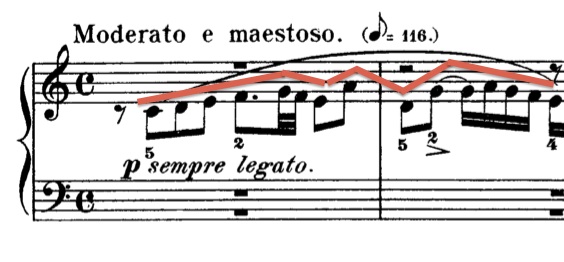
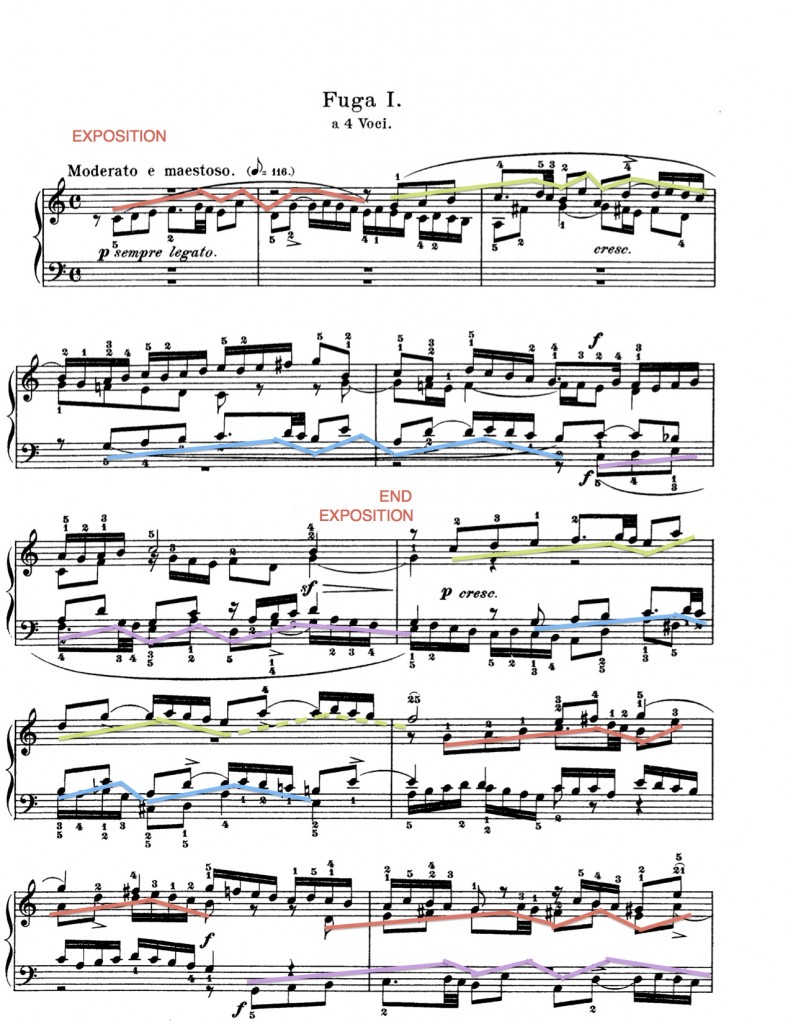
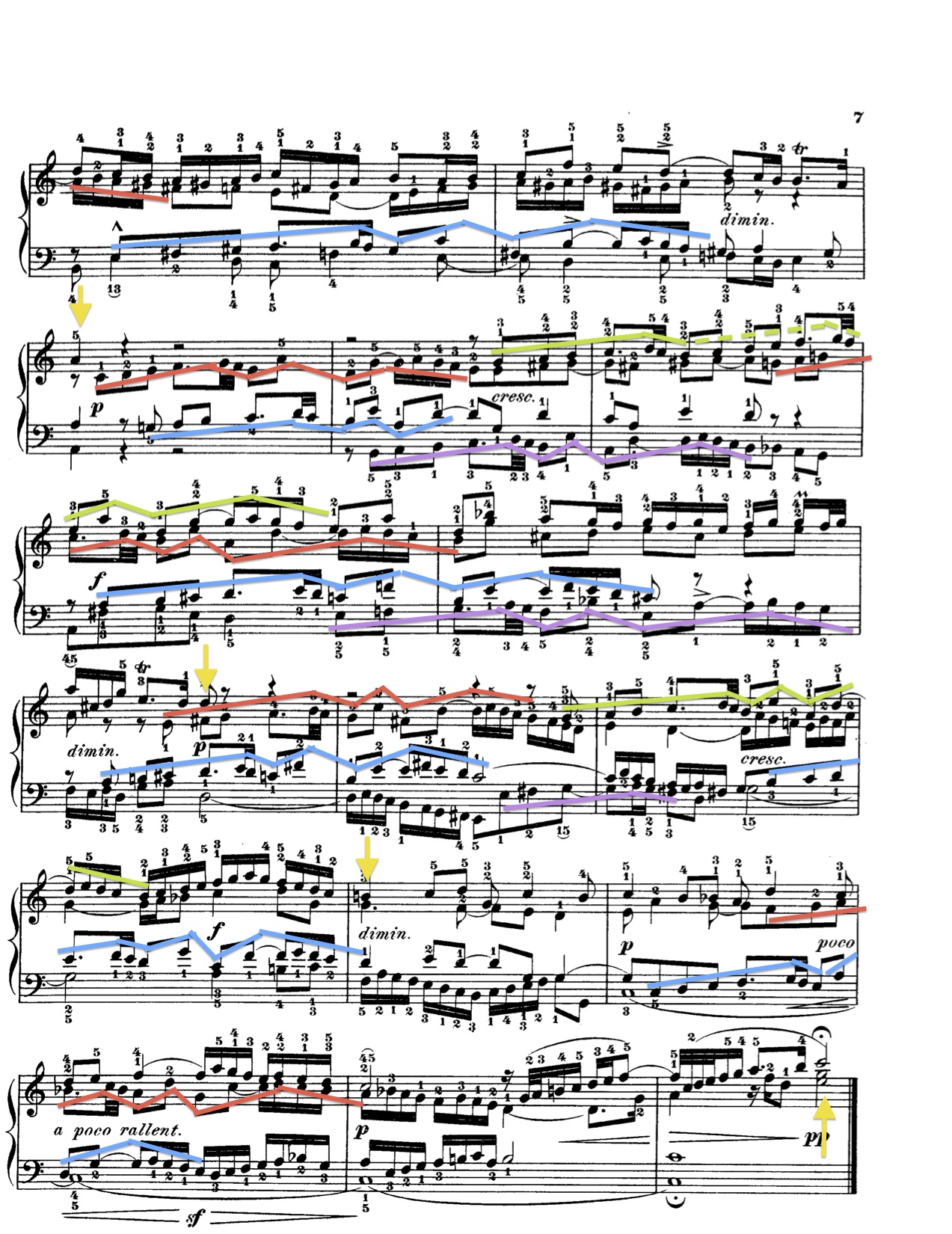

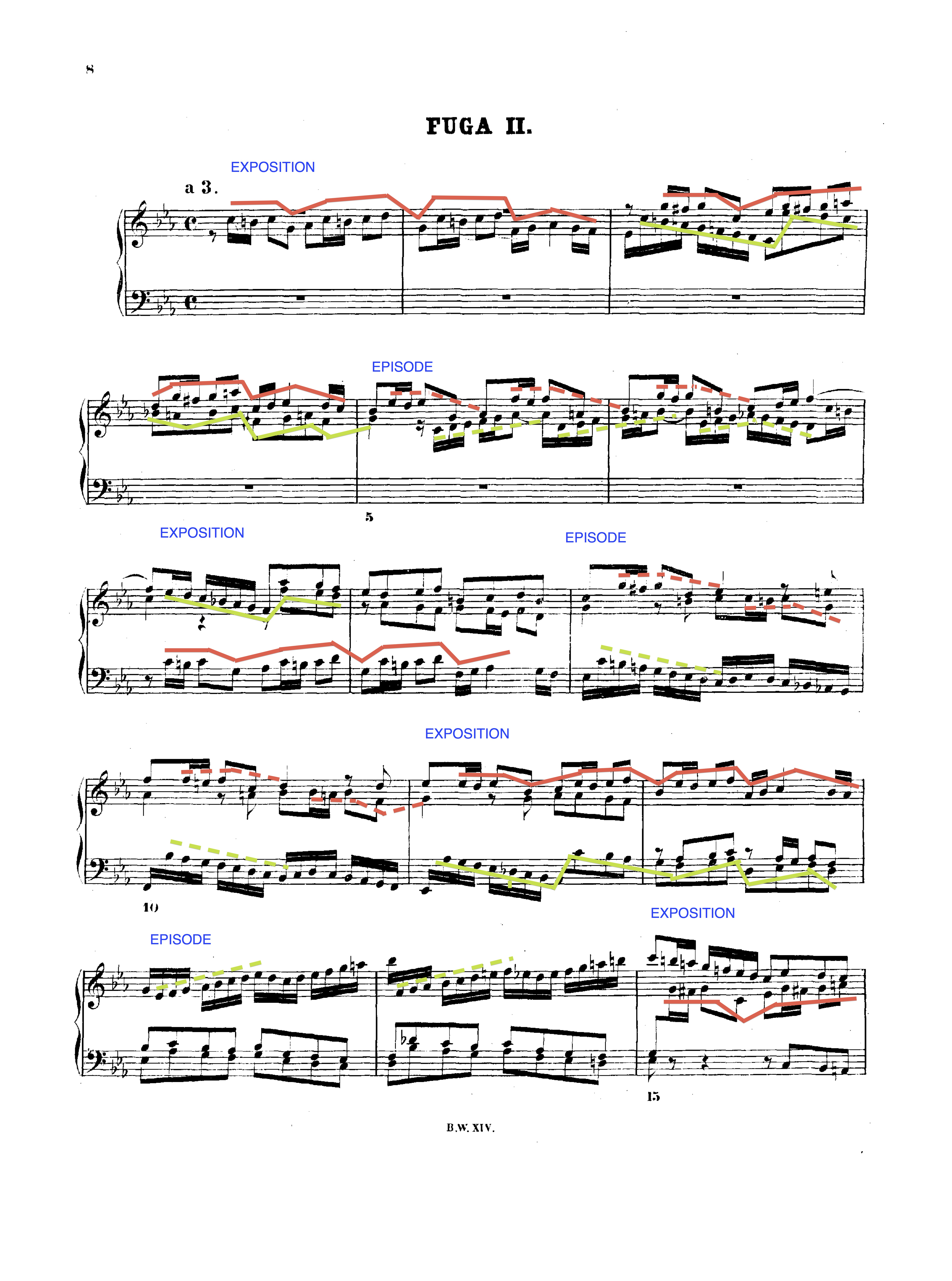
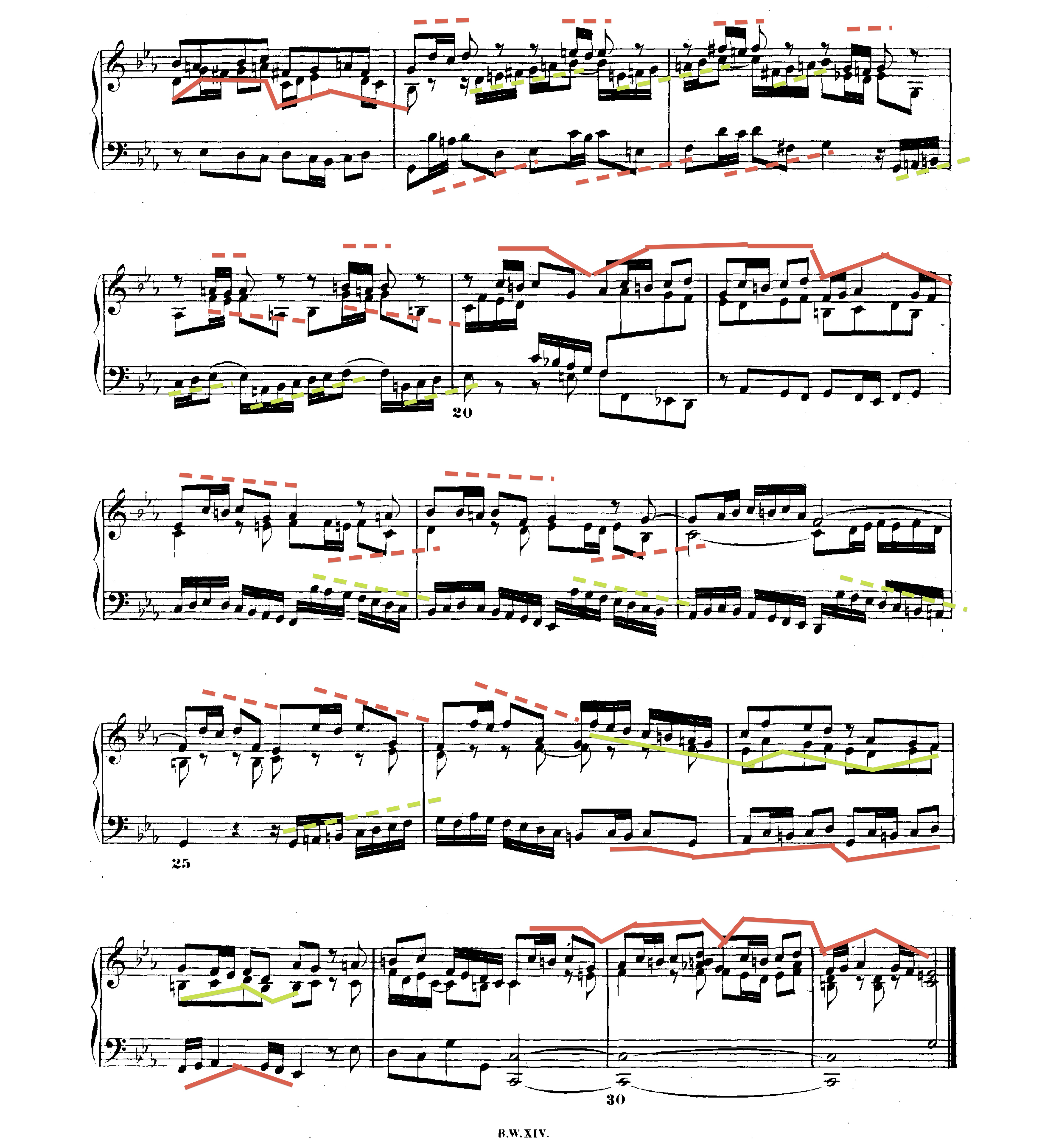
This is very nice. Are you aware of James Joyce’s interest in around 1917 in using the components of a fugue (he identified 8 in all including all the terms you use here, though he used others) to help him structure one of his episodes (‘Sirens’) in his great work Ulysses? I am keen to hear your views on what Joyce might have meant in identifying these 8 components, and also making the transfer from musical to literary form.